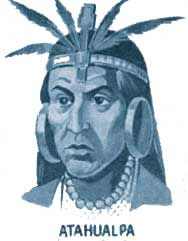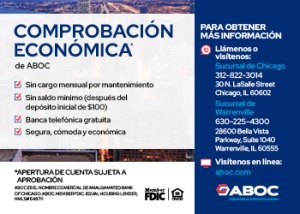By: Daniel Nardini
 A leading Ecuadoran historian named Tamara Estupinan believes that she may have found the tomb of the next to last Incan emperor Atahualpa. A huge tomb and underground complex buried in the humble village of Machay in southern Ecuador is too elaborate for an ordinary person to have been buried in. Also, the tomb and underground passage ways are so long and intricately done that perhaps a person of noble birth was buried here. To make the place more interesting, it is estimated to have been built in the 16th Century—too recent to be an ancient Incan tomb. Just as strange is the fact that it was built in the northern part of the Incan Empire and too far away from the center of its power. Yet by all of its configurations it is an Incan tomb, and it could indeed be the tomb of Atahualpa. It is still conjecture, but it would be one of the greatest finds of the early 21st Century if it is true. Or, it could be one of the biggest hoaxes of the 21st Century. According to all historic records, Atahualpa was executed and buried in Cajamarca in northern Peru. This is according to Spanish records of the time and those surviving Quechua records from those Incans who state they buried Atahualpa’s body.
A leading Ecuadoran historian named Tamara Estupinan believes that she may have found the tomb of the next to last Incan emperor Atahualpa. A huge tomb and underground complex buried in the humble village of Machay in southern Ecuador is too elaborate for an ordinary person to have been buried in. Also, the tomb and underground passage ways are so long and intricately done that perhaps a person of noble birth was buried here. To make the place more interesting, it is estimated to have been built in the 16th Century—too recent to be an ancient Incan tomb. Just as strange is the fact that it was built in the northern part of the Incan Empire and too far away from the center of its power. Yet by all of its configurations it is an Incan tomb, and it could indeed be the tomb of Atahualpa. It is still conjecture, but it would be one of the greatest finds of the early 21st Century if it is true. Or, it could be one of the biggest hoaxes of the 21st Century. According to all historic records, Atahualpa was executed and buried in Cajamarca in northern Peru. This is according to Spanish records of the time and those surviving Quechua records from those Incans who state they buried Atahualpa’s body.
The story of Atahualpa is well known. Born in 1497, he was one of two sons of the Incan emperor of the time Huayna Capac. When Huayna Capac died of an unknown disease (believed to be smallpox) in 1527, Atahualpa and his brother Huascar fought a short but bitter civil war for control of the Incan Empire. At the Battle of Quito, Atahualpa won. However, on his way back to the Incan capital Cuzco he was captured by the Spanish conquistador Francisco Pizarro and his men. Pizarro held Atahualpa hostage in order to extract as much gold from him as possible. When the ransom was paid, Pizarro had Atahualpa brutally murdered. From there the story goes that Atahualpa was buried in Cajamarca where he had been captured and murdered by Pizarro. Until now no one has really disputed where Atahualpa was buried. The main search has been up to now where the bulk of the Incan Empire’s gold and silver may be hidden. This is the treasure the Spaniards were looking for decades after they conquered the Incan Empire. There are many historians and archeologists who believe that this vast treasure never really existed.
But back to the supposed tomb of an Incan emperor. I have a number of questions. First, how can we establish that this is the tomb of an Incan emperor? The Incans left no writing, and we have no drawings or any other means of being able to positively identify the place as a burial chamber of Atahualpa. Second, this burial place is in the Ecuadoran lowlands. Usually Incan emperors were buried in the Peruvian highlands so that they could be close to their capital and ancestors. Finally, it would have been an incredible feat for those still loyal to the dead Incan emperor to be able to have smuggled out his body under the Spaniards’ noses and get his remains this far away. For the Spanish knew that even in death Atahualpa could have been used as a symbol of resistance to them if his remains fell into the hands of their enemies. So we are left with a possibility, a mystery, and a myth (still yet to be proven by archeology) that somehow Atahualpa’s remains escaped and found peace somewhere else.
 Senator Dick Durbin Not Seeking Re-Election April 24, 2025
Senator Dick Durbin Not Seeking Re-Election April 24, 2025








Atahualpa’s Last Resting Place?
By: Daniel Nardini
The story of Atahualpa is well known. Born in 1497, he was one of two sons of the Incan emperor of the time Huayna Capac. When Huayna Capac died of an unknown disease (believed to be smallpox) in 1527, Atahualpa and his brother Huascar fought a short but bitter civil war for control of the Incan Empire. At the Battle of Quito, Atahualpa won. However, on his way back to the Incan capital Cuzco he was captured by the Spanish conquistador Francisco Pizarro and his men. Pizarro held Atahualpa hostage in order to extract as much gold from him as possible. When the ransom was paid, Pizarro had Atahualpa brutally murdered. From there the story goes that Atahualpa was buried in Cajamarca where he had been captured and murdered by Pizarro. Until now no one has really disputed where Atahualpa was buried. The main search has been up to now where the bulk of the Incan Empire’s gold and silver may be hidden. This is the treasure the Spaniards were looking for decades after they conquered the Incan Empire. There are many historians and archeologists who believe that this vast treasure never really existed.
But back to the supposed tomb of an Incan emperor. I have a number of questions. First, how can we establish that this is the tomb of an Incan emperor? The Incans left no writing, and we have no drawings or any other means of being able to positively identify the place as a burial chamber of Atahualpa. Second, this burial place is in the Ecuadoran lowlands. Usually Incan emperors were buried in the Peruvian highlands so that they could be close to their capital and ancestors. Finally, it would have been an incredible feat for those still loyal to the dead Incan emperor to be able to have smuggled out his body under the Spaniards’ noses and get his remains this far away. For the Spanish knew that even in death Atahualpa could have been used as a symbol of resistance to them if his remains fell into the hands of their enemies. So we are left with a possibility, a mystery, and a myth (still yet to be proven by archeology) that somehow Atahualpa’s remains escaped and found peace somewhere else.